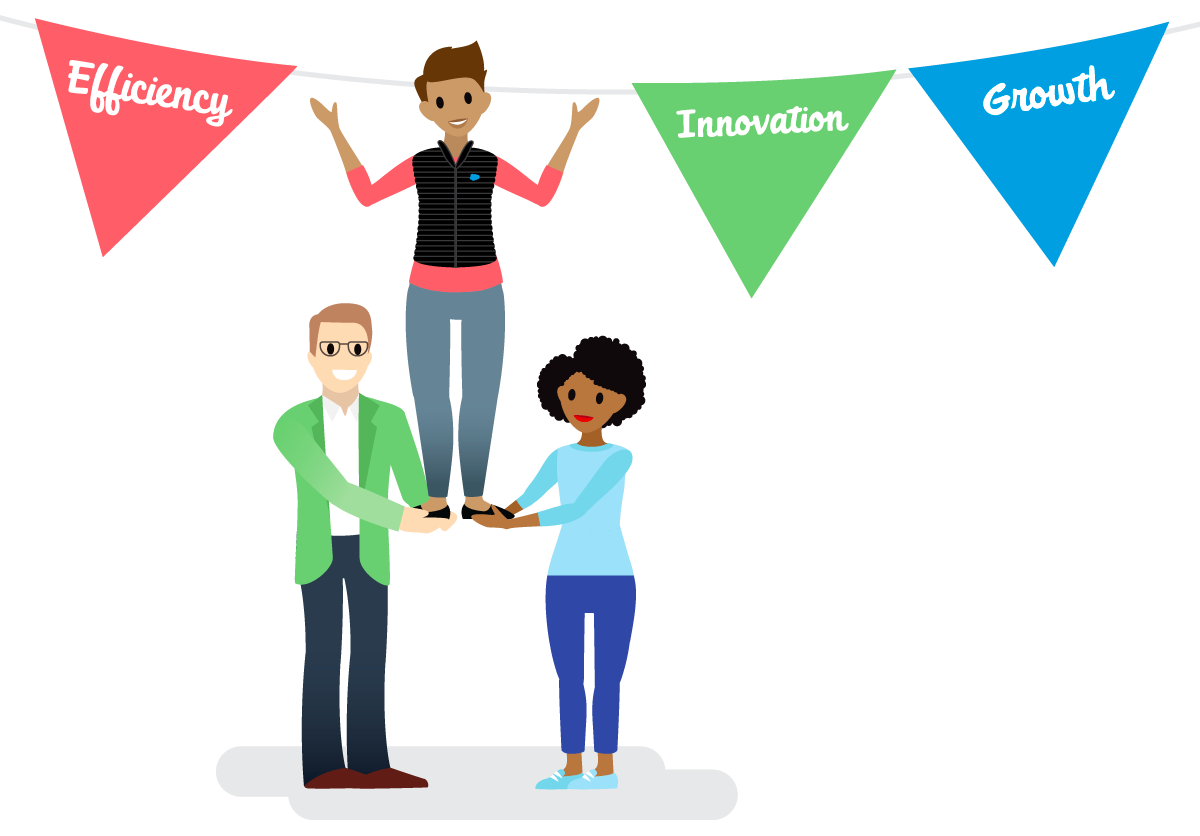Choose Courage Over Comfort
Learning Objectives
After completing this unit, you’ll be able to:
- Describe the relationships among psychological safety, vulnerability, and courage.
- Explain how choosing courage over comfort helps build fearless, high-performing teams.
Get Comfy Being Uncomfortable
Psychological safety is not something that we achieve, check off of our to-do list, and then forget about. We can’t guarantee that once we feel psychologically safe, we’ll always feel safe. In truth, we’ll never be entirely psychologically safe, because our work and work environments change and we’re humans with flaws and fears.
That’s okay! What we want to establish is more psychological safety so that more people are able to speak up. This is an ongoing journey that requires us, as individuals, to be vulnerable and to continually choose courage over comfort.
“Hold up! I don’t want to be vulnerable. That’s a bad thing!” Well, not necessarily. Vulnerability isn’t weakness. As research professor and author of Dare to Lead, Brené Brown, explains, vulnerability is “the emotion that we experience during times of uncertainty, risk, and emotional exposure.” It’s what we feel when we suspect that something—our reputation, mainly—might be at risk.
Remember those interpersonal risks we discussed in the previous unit? In an environment that’s not psychologically safe, asking questions, admitting mistakes, and making suggestions might make us feel vulnerable, or open to negative consequences. We avoid these risks for fear of looking ignorant, incompetent, or disruptive.
But in a more psychologically safe environment, we might lean into vulnerability as a learning opportunity.
That’s where courage comes into play. When we’re courageous, we take these opportunities despite feeling vulnerable and afraid. When we’re courageous, we reach out and speak up, even though we know we might fall. Brown describes this relationship as the “physics of vulnerability.”

We lean into the discomfort because it’s the right thing to do and leads to lots of great things.
Team Up to Take Action
By choosing courage over comfort and speaking up despite our misgivings, we inspire members of our team to do the same. In the process, we establish an environment of psychological safety for everyone.
Because we’re all laying ourselves on the line, we comfortably collaborate—instead of focusing on the fear of personal repercussions—and put our energy into efficiency, innovation, and growth.

To reach such great heights, going it alone won’t cut it. We must focus on tapping into the collective knowledge and experience of our team members so that we can better operate together. This is key to effective teaming. And, as we’ve mentioned, it’s absolutely crucial as work becomes more complex and employee populations become more diverse and geographically dispersed.
When we effectively team and agree how we want to work together, we make better decisions, have more of an impact on customers, and produce superior business results, all because we:
- Co-create our vision and values
- Align on expectations and goals
- Clarify roles and responsibilities
- Have courageous conversations
- Experiment and take risks
- Make time to reflect
- Admit mistakes
Let’s look at an example of how feeling psychologically safe enough to choose courage over comfort can lead to effective teaming.
See Something, Say Something
Santha is a member of a team that’s responsible for the release of a new product feature. It’s such an innovative feature that it’s already being hyped to customers—and they’re chomping at the bit to get ahold of it.
However, Santha, has discovered that the feature has a small bug that still needs to be worked out. The release date is quickly approaching, so she needs to tell the team... now.
Santha immediately calls a meeting and tells the team about the bug. It’s a tough discussion given the pending deadline, but because the team is so tight, because they trust one another, they’re able to rally. They troubleshoot without placing blame, consider potential solutions without passing judgement, and in the end, fix the problem and get the product ready for primetime.

In this scenario, Santha understands that choosing courage over comfort is the right thing to do. Her team allows and appreciates her courage, and the customer gets a product that meets the company’s exceptional standards.
So, what’s the flip side of feeling safe enough to speak up? Well, in Santha’s case, if she hadn’t spoken up, and the bug had slipped through, the customer’s trust would’ve been compromised.
According to a VitalSmarts study and research conducted by Amy Edmondson and Brené Brown, when we choose comfort over courage, we experience a shuttering of ideas and create a culture of silence that soon becomes toxic. We see increases in:
- Unproductive conflict
- Stress and pressure
- Misunderstandings and miscommunication
- Disengagement and attrition
- Errors and product failures
- Losses to competitors
Sounds terrible, right? Yep—that’s not teaming; that’s tanking.
Hang in there… next up, we discuss strategies we can all use to build psychological safety and fearlessly team. So, let’s swing on over to the next unit.
Resources
- Video: The Power of Vulnerability
- Book: Dare to Lead
- PDF: Dare to Lead Read-Along Workbook
- Article: Costly Conversations: Why the Way Employees Communicate Will Make or Break Your Bottom Line